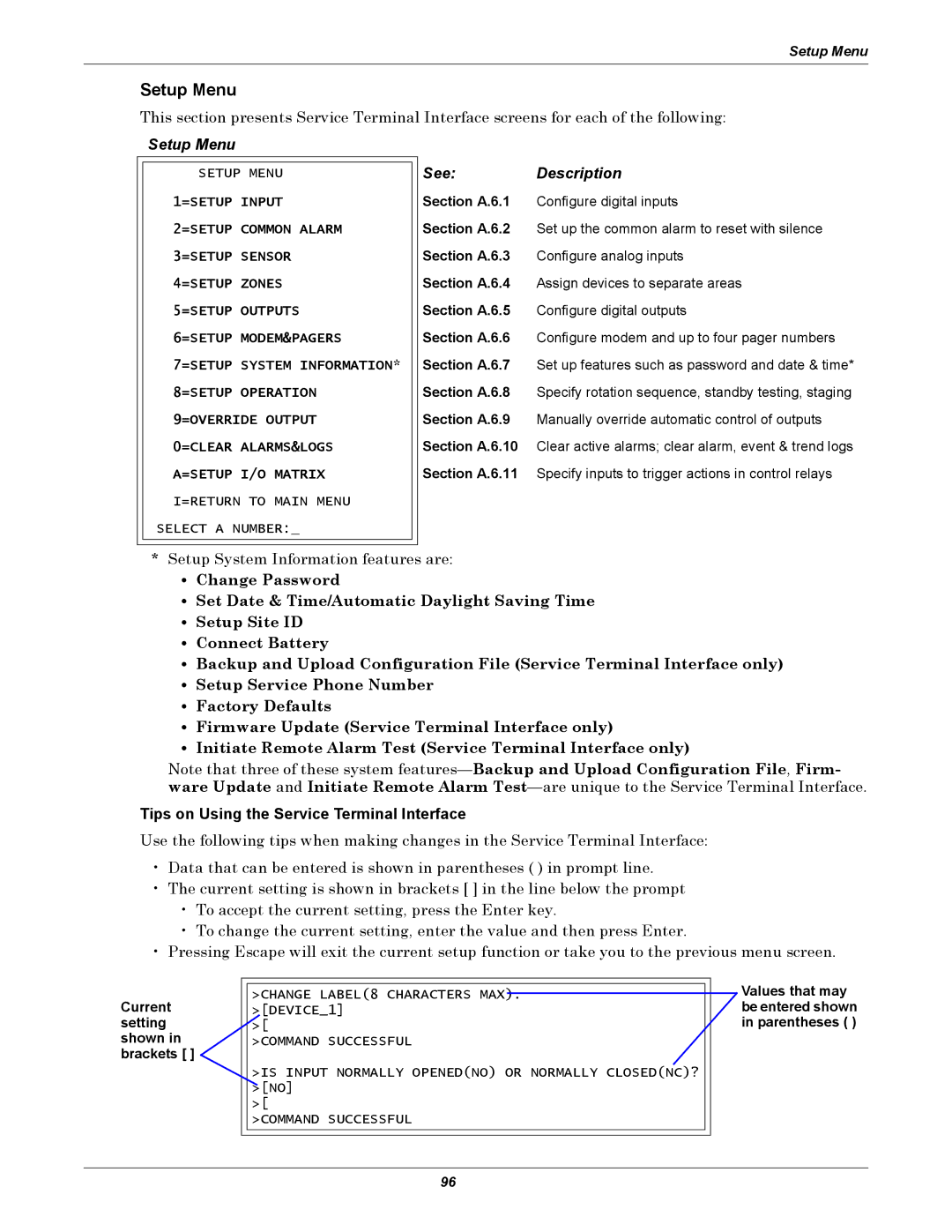
Setup Menu
Setup Menu
This section presents Service Terminal Interface screens for each of the following:
Setup Menu
SETUP MENU
1=SETUP INPUT 2=SETUP COMMON ALARM 3=SETUP SENSOR 4=SETUP ZONES 5=SETUP OUTPUTS 6=SETUP MODEM&PAGERS 7=SETUP SYSTEM INFORMATION*
8=SETUP OPERATION
9=OVERRIDE OUTPUT 0=CLEAR ALARMS&LOGS A=SETUP I/O MATRIX
I=RETURN TO MAIN MENU
SELECT A NUMBER:
See: Description
Section A.6.1 Configure digital inputs
Section A.6.2 Set up the common alarm to reset with silence Section A.6.3 Configure analog inputs
Section A.6.4 Assign devices to separate areas
Section A.6.5 Configure digital outputs
Section A.6.6 Configure modem and up to four pager numbers Section A.6.7 Set up features such as password and date & time* Section A.6.8 Specify rotation sequence, standby testing, staging Section A.6.9 Manually override automatic control of outputs Section A.6.10 Clear active alarms; clear alarm, event & trend logs Section A.6.11 Specify inputs to trigger actions in control relays
*Setup System Information features are:
•Change Password
•Set Date & Time/Automatic Daylight Saving Time
•Setup Site ID
•Connect Battery
•Backup and Upload Configuration File (Service Terminal Interface only)
•Setup Service Phone Number
•Factory Defaults
•Firmware Update (Service Terminal Interface only)
•Initiate Remote Alarm Test (Service Terminal Interface only)
Note that three of these system
Tips on Using the Service Terminal Interface
Use the following tips when making changes in the Service Terminal Interface:
•Data that can be entered is shown in parentheses ( ) in prompt line.
•The current setting is shown in brackets [ ] in the line below the prompt
•To accept the current setting, press the Enter key.
•To change the current setting, enter the value and then press Enter.
•Pressing Escape will exit the current setup function or take you to the previous menu screen.
Current setting shown in brackets [ ]
>CHANGE LABEL(8 CHARACTERS MAX). >[DEVICE_1]
>[
>COMMAND SUCCESSFUL
>IS INPUT NORMALLY OPENED(NO) OR NORMALLY CLOSED(NC)? >[NO]
>[
>COMMAND SUCCESSFUL
Values that may be entered shown in parentheses ( )
96
